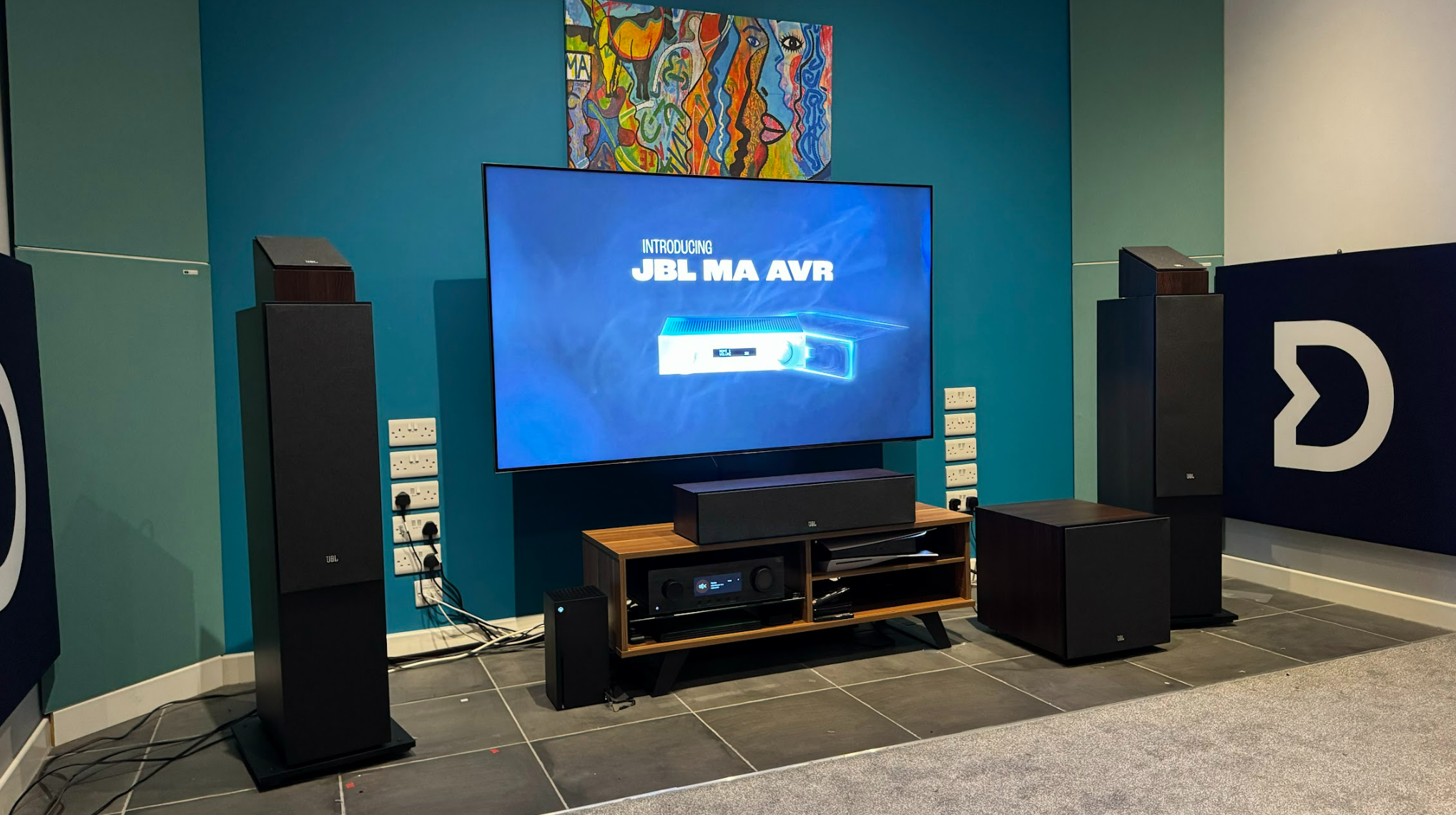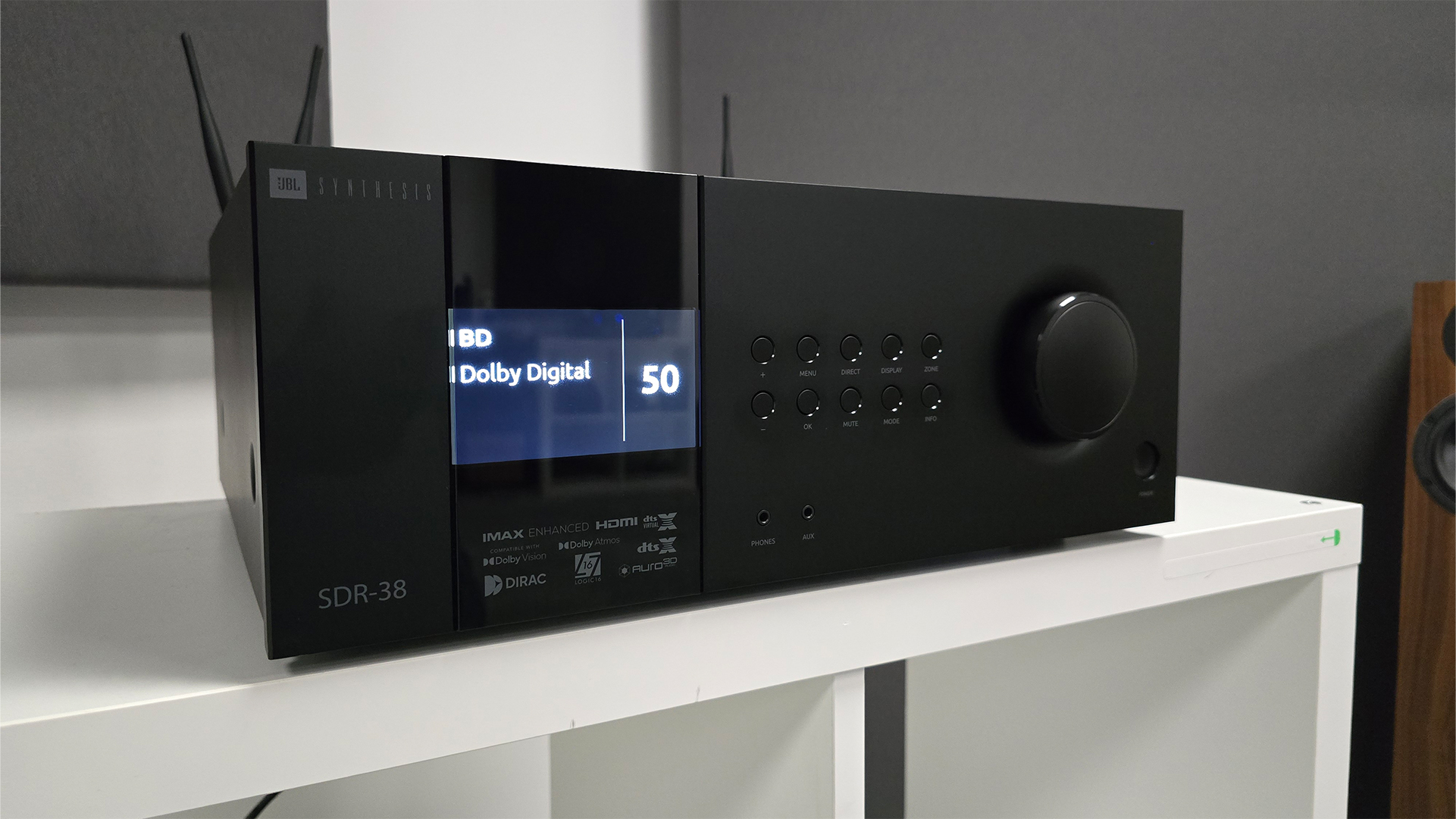Early Verdict
It's too early to say quite yet, but this stylish and intuitive system seems to have some promising sonic qualities.
Pros
- +
Stylish and easy to use
- +
Punchy and controlled bass
- +
Clear, crisp and detailed vocals
Cons
- -
Ez EQ app doesn't measure speaker distances
- -
Need more time to form final thoughts
Why you can trust What Hi-Fi?
JBL has dropped a home cinema bombshell with its new range of home cinema AVRs and speakers, with a whopping 13 new products in total making up the range, There are five new Master Audio (MA for short) AV receivers and eight new speakers; two pairs of floorstanders, two pairs of standmounters (with accompanying optional stands), two subwoofers, one centre channel and a pair of Dolby Atmos height speakers.
While the announcement of all of this new gear alone was enough to get the AV team very excited, the good news didn't stop there, as JBL kindly offered us a private demo of these new systems in one of its home cinema rooms in Waterbeach, Cambridgeshire. We, of course, jumped at the offer.
While we were shown three systems in total, we've decided to do a deeper dive into the highest end of the three. That system comprised of the MA9100HP (JBL's new flagship amplifier of this range) alongside the Stage 280F (front), Stage 260F (surrounds), Stage 245C (centre) and Stage 240H (height) speakers and Stage 220P subwoofer in a 5.1.4 arrangement.
As always with these early previews, this is not a final assessment of how this system performs – we'll have to wait until we hear it in our home cinema testing room to finalise our thoughts.
Price
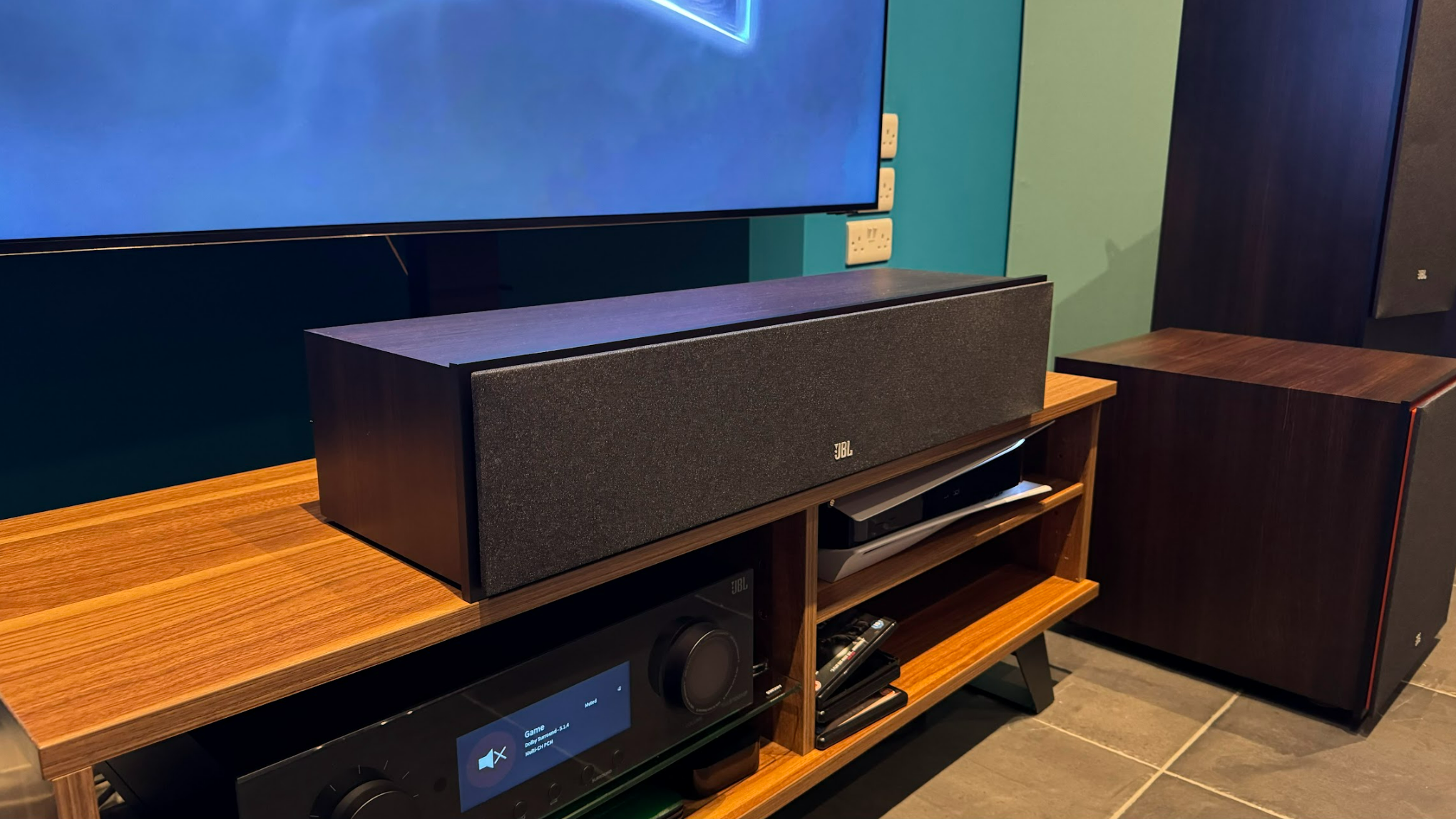
The system we heard costs £6173 / $5847 (Australia pricing pending), or for a more precise price breakdown, you can find our news stories on the MA AVR series and Stage 2 speakers. For a full AVR and 5.1.4 speaker system, that is what we'd consider to be fairly reasonable, although we're not taking cables into account there.
JBL says that there are currently no plans to sell this system as a full bundle, with an emphasis on upgradeability at the heart of the system, meaning you could hypothetically buy this as a 2.1 or 5.1 system initially and add further components from the range later down the line to create a 5.1.4 or 7.1.2 system when you so desire.
JBL is offering the AVR in either black or white, while the speakers come in espresso or latte – which feature dark and light wood finishes respectively with black or white matching baffles and magnetic grilles to suit each colourway.
The latest hi-fi, home cinema and tech news, reviews, buying advice and deals, direct to your inbox.
It's also worth stating that, while JBL would obviously like you to pair one of its new AVRs with its new speakers and vice versa, these AVRs will of course pair with any existing speaker package from another brand.
Features
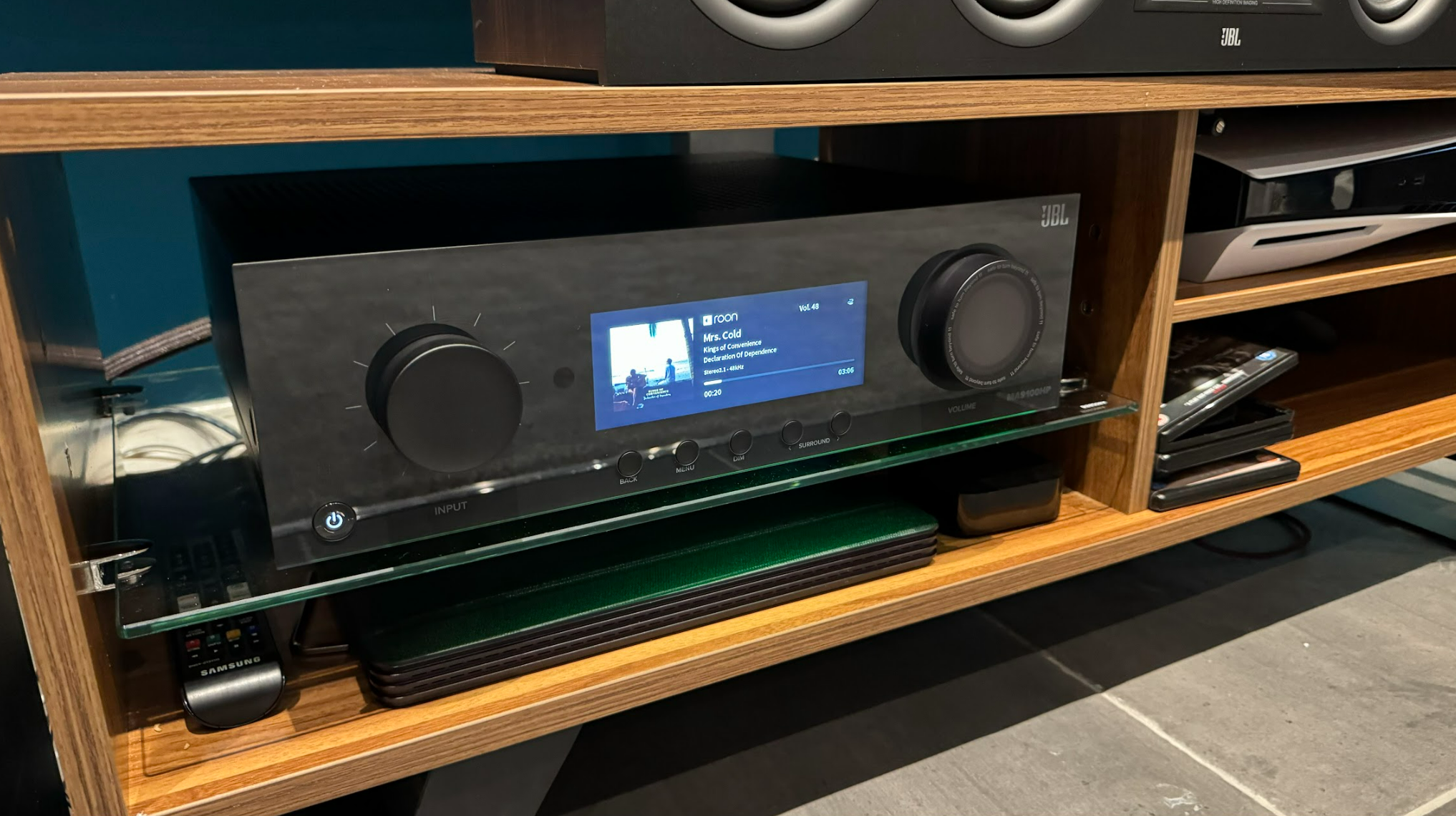
We'll start with the MA9100HP, which sits atop the roster of new AVRs from JBL. It features nine channels of Class D amplification, as well as supporting dual subwoofer outputs (these are mirrored, not independent low-frequency channels). JBL quotes 140W of amplifications, however, we suspect that this figure isn't representative of all channels driven.
There are two HDMI outputs for a main and secondary zone with HDMI eARC support, as well as six HDMI inputs; three of which support 8K or 4K/120Hz signals, while the other three appear to support 4K/60Hz. JBL is catering well to gamers too, with support for VRR and ALLM, although we'll need to check if that's across all six of the HDMI inputs.
JBL is also highlighting this AVR's musical prowess, which should be evident by the inclusion of the moving magnet phono input, ideal for hooking this amplifier up to a turntable. There is also AirPlay 2, Google Chromecast and Bluetooth with the aptX Adaptive codec supported for wireless music streaming.
There are also a handful of nice additional quality-of-life features to be found on this AVR, such as a full-colour display that shows music artwork when you stream content from the likes of Spotify or Apple Music and a customisable accent light that runs along the bottom edge of the unit.
There are on-screen menus for navigating the settings menus; which should make set-up a breeze, as well as an app-based calibration system which we more commonly see on soundbars. Using the EZ Set EQ app on an iPhone (Android phones require an additional microphone which is sold separately), the AVR can automatically set your speaker levels. Unfortunately, speaker distances still need to be measured and set manually, which feels like a slight oversight.
Moving onto the speaker package, we have the 280F floorstanders as the star of the show, serving as the front left and right channels. Each speaker features dual 20cm polycellulose ribbed cone woofers paired with a 25mm aluminium tweeter. JBL has highlighted the upgraded waveguide technology which can be seen in the High Definition Imaging horn surrounding the tweeter. The unique grooves around the tweeter supposedly enhance the spread of sound resulting in a wider yet more consistent performance; meaning the individual "sweet spot" position could be a thing of the past.
Flipping each speaker around we find dedicated passthrough binding posts for the Dolby Atmos speakers towards the top, which is a very handy system for reducing cable clutter, alongside dual racetrack rear-firing ports which should allow for greater flexibility when it comes to placement. The smaller S260F speakers, here used as surrounds, are very similar but instead feature slightly smaller 16.5cm woofers.
JBL is only offering one centre channel in this new range, the Stage 245C, which features quad 11.4cm woofers alongside the 25mm aluminium tweeter also featured in the floorstanding speakers. Furthermore, the Stage 240H Dolby Atmos height speakers feature the same 11.4cm woofer and 25mm aluminium tweeter pairing.
Finally, the Stage 220P 12-inch powered subwoofer ties this system together, with a claimed 500W power output and a 12-inch polycellulose ribbed cone low-frequency woofer and dual rear-firing ports. This is the larger and more powerful option of JBL's new duo of powered subwoofers.
Sound

JBL's endeavour to make a system that is both musical and cinematic is admirable, and we think that this philosophy is already showing some promise when it comes to our brief listening time. While we can't pass a final judgement yet, this system seems talented, engaging and likeable in our short but insightful demo. We were treated to a variety of content on this system ranging from Dune: Part One to Billie Eilish's Happier Than Ever: A Love Letter To Los Angeles on Disney+, alongside other film and music clips.
Starting with Dune, we have the trusty sandworm attack sequence that we use often for testing. Overall, the JBL system sounded quite engaging, with an encompassing surround sound effect that was certainly aided by the height channels. When a worm-spotting aircraft passed overhead, the Dolby Atmos height channels managed to create a convincing overhead effect without amplifying the fairly delicate sound too harshly.
Clarity is also an immediate strength with this system, as vocals remained clear and detailed without losing the tricky inflexion of this scene. Many characters use headsets to communicate, there is a natural bit of sibilance to voices, which was balanced nicely on this system without verging into an unpleasant hiss. Low-level dynamics seem to be well looked after too, with the tension and urgency within voices also coming across clearly.
On the subject of dynamics, we also think it's fair to say that this system packed quite a serious punch. Bass was snappy, controlled and deep, especially when it came to the booming tribal drums featured within the scene. Moreover, the moment when the worm breaches the titular dunes, the system really kicked into high gear with a punchy and exciting performance that certainly has us interested in seeing what else it's capable of.
Moving on to Billie Eilish, this is a unique piece of content, as it's a live recording concert film but there doesn't seem to be any audience present (at least in the portion we saw). Despite that fact, the JBL system still managed to create a convincing sense of space, making us really feel like we were at a Billie Eilish concert.
Vocals were rich and there were plenty of Eilish's signature vocal characteristics to pick out too. We can't fault the presentation of the instrumental portions either, as everything sounded natural and balanced, with a seemingly solid grasp of timing underpinning this portion of the demo.
Early verdict
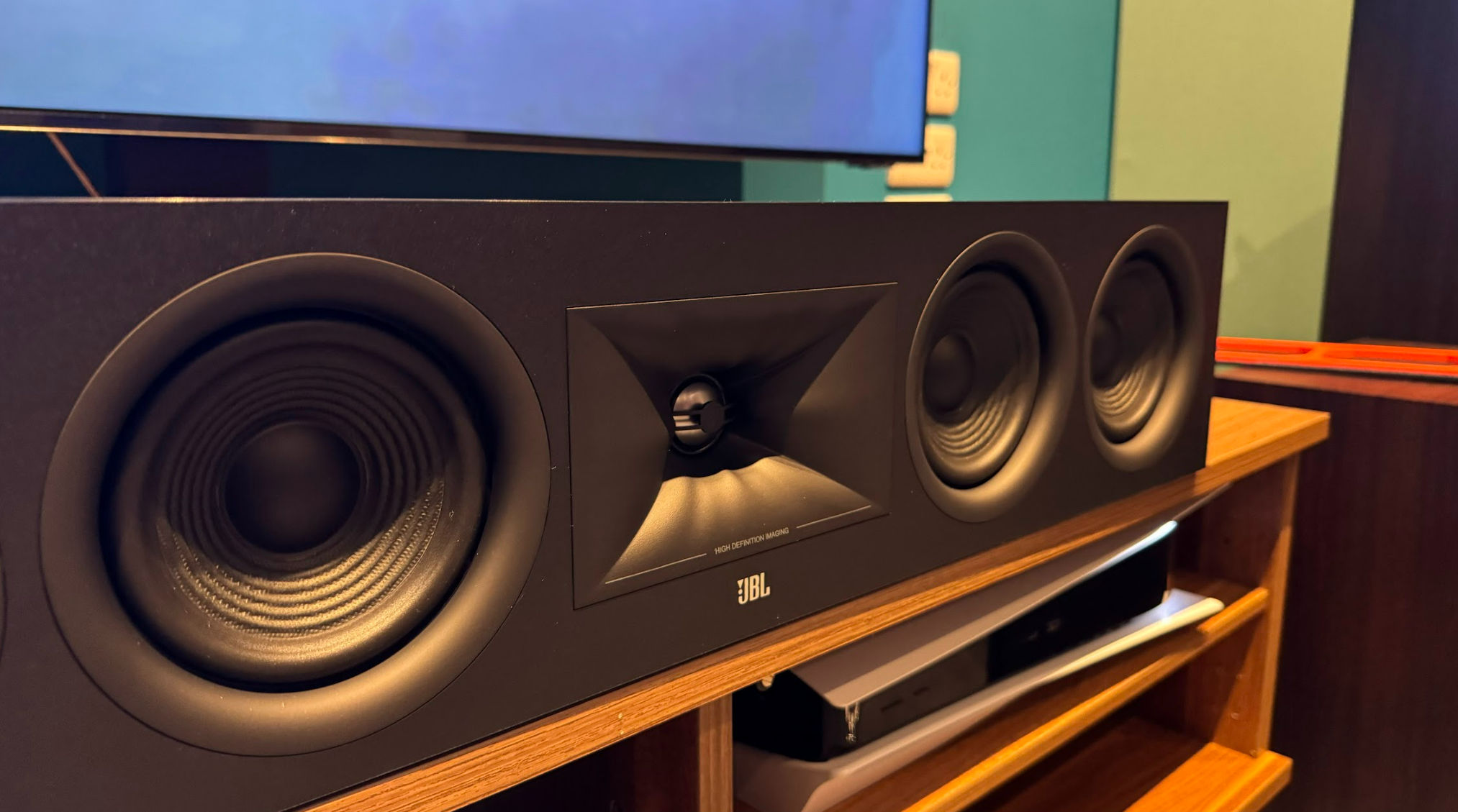
We've said it once, but we'll say it again just in case; it's far too early to call a conclusive verdict on this system. However, we have liked what we've seen and heard so far. JBL's stylish and user-friendly home cinema speaker system already sounds pretty good to us, but only time will tell if that translates to our own home cinema testing room. Stay posted for a full review of both the MA9100HP AVR and Stage 2 5.1.4 speaker system coming later down the line.
MORE:
Check out our picks for the best surround sound speaker systems
And the best AV receivers
I've listened to JBL's new Master Audio AVRs, and I'm thrilled that Denon has some competition
Lewis Empson is a Senior Staff Writer on What Hi-Fi?. He was previously Gaming and Digital editor for Cardiff University's 'Quench Magazine', Lewis graduated in 2021 and has since worked on a selection of lifestyle magazines and regional newspapers. Outside of work, he enjoys gaming, gigs and regular cinema trips.
What is a hands on review?
'Hands on reviews' are a journalist's first impressions of a piece of kit based on spending some time with it. It may be just a few moments, or a few hours. The important thing is we have been able to play with it ourselves and can give you some sense of what it's like to use, even if it's only an embryonic view.
